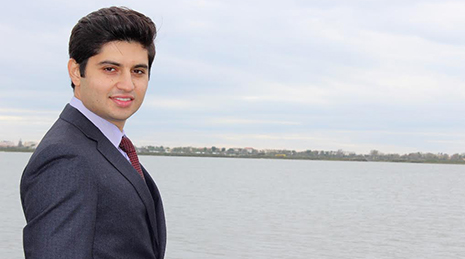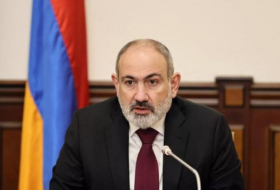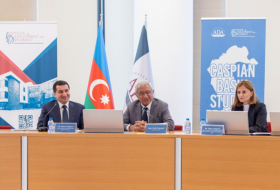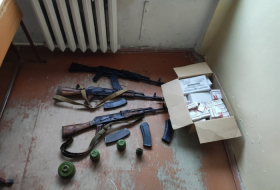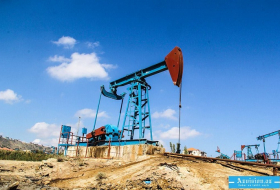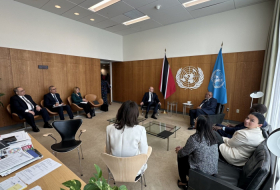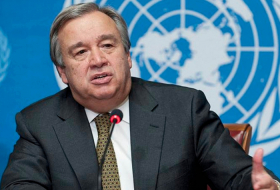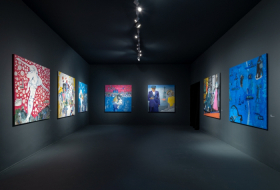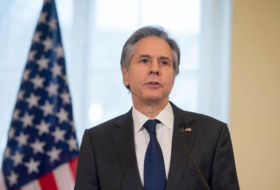Urbanism and Gouvernance Alumni of the University of Montpellier, France
“State Program for study of Azerbaijani youth abroad for 2007-2015”
Montpellier was distinguished (le palmarès de l`Express in 2010) on several criteria: the first city in France for the supply of medical care, the second for its economic dynamism and the third for its environment. In the same time, the city is also trying to develop its digital innovation by reaching its goal to become the first French Tech city - “Silicon Valley”. Montpellier also supported city Gandja in order to obtain European Youth Capital nomination.
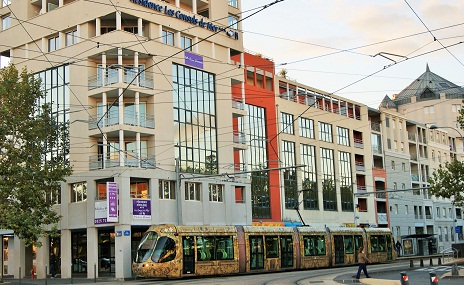
Montpellier - Mediterranean town
What else we should mention about Montpellier. The city is situated in an advantageous strategic point in the Mediterranean arc that stretches from Barcelona (Spain) to Genoa (Italy) and is almost connected by tramway (for 7.1 km) to the Mediterranean Sea. Being the departmental and regional capital, the city continues its growth in terms of urbanism and population.
Indeed, it has a steady population growth. Montpellier passed in three decades from the 22th to the 8th largest city in France. Today, it has 264,538 inhabitants according to INSEE (French National Institute for Statistics and Economic Research) in 2011. Whereas before World War II, Montpellier had 90,800 inhabitants. Each year, its urban agglomeration attracts nearly 6,000 people and the property prices have more than doubled in ten years.
What are the reasons for this demographic growth? What is the place of the city between two major cities in the South of France, Marseille and Toulouse? What policy does provincial city lead today for its continual urban development and strategic ambitions?
History and cultural richness of “Mediterranean” town
Montpellier has been a famous city in Europe for its medical school since the XII century. Michel Nostradamus also worked here in the XV century. Montpellier was also known for its education in law.

The Arch of Triumph from The Payrou Gardens
"The Arch of Triumph" (l`Arc de triomphe), "The Peyrou Gardens" (Les Jardins du Pêyrou), "The Tower of Babotte" (La tour de la Babotte), "The Saint-Pierre Cathedral" (la cathédrale Saint-Pierre), "Les Arceaux" and other historical and cultural buildings are situated in the old city. The Aqueduct St. Clement (L`aqueduc Saint-Clément) called "Les Arceaux" has provided the city with spring water. These monuments make us recall its medieval history.
In the 1970s, the city was extended by Antigone district to the Lez River. This district was built by Catalan architect Ricardo Bofill who is famous for his ancient Greco-Roman style. The main idea was to have a "promenade" from "The Peyrou Gardens" to the "Port Marianne" district, through several important points of the city such as old city (vieille ville), the Comedy square (la place de la Comédie), Antigone district. The gathering place of citizens is the Comedy square.
Lack of fame: the city is trying to catch up with famous architects
Montpellier lacks global fame in terms of urbanism unlike other provincial cities like Bordeaux, Toulouse, Lille and Nantes. These cities receive more attention for their urban potential and they are more famous than Montpellier.
Thus, the city tries to mark its existence. Eco-districts such as "Port Marianne", "Rives du Lez", and "Malbosc" are ambitious projects for a city like its size of Montpellier. At the same time, we can see some interesting buildings by famous architects. The interesting buildings are the office of the Mayor of Montpellier (costing € 135 million) by architect Jean Nouvel, the building of the departmental library called "Pierre Vives" (costing € 125 million) by Zaha Hadid (author of Heydar Aliyev Cultural Centre in Baku), the building of "The Gardens of Lironde" (Les Jardins de Lironde) which was built on two islands, by Christian Portzamparc and "Espace Pitôt" by Richard Meier.

The Office of the Mayor of Montpellier
All of these architects are winners of the Pritzker Prize which speaks of their talent. Another interesting example is "The White Tree" (l`Arbre Blanc) for the nomination "madness architecture". It`s a 17 storeyed residential tower designed by the Japanese architect Suo Fujimoto.
The building of the new Montpellier St. Roch rail station will be opened on the second of December 2015 after three years of its renovation. It will help the city to manage the passengers (6 million passengers per year) and accommodate them well. The project was designed by architect Jean Marie Duthilleul. It will contribute to the project called new "Urban Development Zone" (zone d`aménagement concerté) and to the city center.
A lively student city
Montpellier is one of the first student cities in Europe with over 70,000 students and 1/3 of its population under 30 years of age. In 2012, Montpellier city was awarded third place for the nomination "Good to study" just behind Toulouse and Grenoble.
The city also has several student campuses and others are under renovation or construction by the public structure « Opération Campus ». Every year "The International Desk" for Students and Researchers of ComUE « Languedoc-Roussillon Universités » welcomes thousands of students from different parts of the world. On the website of PRES COMUE we can find also useful information in Azeri language for Azerbaijani students.
For a long time the University of Montpellier used to be as a united education centre comparing for now. Today it`s divided into three universities: University 1 (medicine, economics, and science), University II (technical subjects) and the University Paul Valéry Montpellier III (humanitarian subjects). The University I and II became united from the 1st of January 2015. Also the city has several institutes, private and public schools.

The University of Montpellier
The master program - "Urbanism and territorial projects" of the University Paul Valéry Montpellier III and the education in architecture from the National School of Architecture of Montpellier are the main specializations in the city for future urban planners and architects. The alumni of these universities are indicators of big ambitions of this city which aims to be placed on the top 5 French metropolises by 2040.
Montpellier is famous for its slogan: "La ville où le soleil ne se couche jamais" (The city where the sun never sets)

The Comedy square
Because of the number of sunny days (approximately 300 sunny days per year), Montpellier has a famous slogan “The city where sun never sets”. Here, the rate of population increase is one of the highest among major French cities. The city is ranked among the cities with the highest population growth in France, Nantes and Toulouse (1990-2004).
It`s a student and tourist city where the industry is not strongly present. Indeed, with the sun, the sea and because of the cultural richness of Montpellier, people come more and more to visit or to live here.
In 2012, "New York Times" selected the city in its annual list of "45 places to visit in the world". The same year, Montpellier was the French football and handball champion. These facts develop its growing tourism potential.
Meanwhile, Montpellier is the capital of a region with the highest level of unemployment (14%). Moreover, the pace of job creation is also not sufficient to meet the needs of its population.
Transport: Montpellier pays particular attention to its tramway lines
There are no metro lines in Montpellier but the city is starting to pay more attention to its tramway lines. A tramway line is ten times less expensive than metro line and Montpellier has four tramway (L1, L2, L3 and L4) lines with a fifth (L5) under construction.
Moreover, the tramway travellers sometimes are confused with the different lines and they have a hard time choosing the direction they are going. The city uses custom designs for each tram line to avoid this problem and to improve the tourism appeal.
In Montpellier, unlike other French cities, every line is custom designed: white swallows on blue for L1, colourful flowers for L2, sea monsters for L3 (which goes to the sea) and gold embroidery for L4. The goal for tramway design L5 is to offer a different image of the city. "Silhouettes of women" on the tramway is a more human, poetic and funny design.

The city tramways
The city tramways which are colored with very Mediterranean colors was recognized by the New York Times as "the sexiest trams in Europe".
The tramway lines are very important for the city development. It gives a strong image to the city and it describes its urban landscape. However, the city suffers from its inadequate road network and traffic jams.
Urban ambitions of the city: Now it`s a metropolis!
The city of Montpellier voted in favor of gaining the status of metropolis from the 1 of January 2015. A metropolis is a large city or urban area status which is a significant economic, political and cultural center for a region. The term is Greek and means the “mother city”. The Montpellier metropolis is called the "Montpellier Mediterranean Metropolis".
The metropolis will have thirty one satellite cities, the current agglomeration perimeter. The interest in passing from Agglomeration to Metropolis is to get more authority from the municipalities, departments, the region and the state. The roads and urban planning are the two major jurisdictions that will be transferred to the Metropolis. We can also add authorities such as the management of parking areas for travellers, the university education and the tourism.
This will also help create a high level of attractiveness for companies or headquarters of large administrations. At the international level, Montpellier is trying to do its best to interact with major cities like Tokyo, Johannesburg or Melbourne.
Furthermore, the mayor of the city began to think of its future in the context of "Urban project - Montpellier in 2040" by Italian architects Bernardo Secchi and Paola Vigano. These architects are also famous for their contribution to major urban projects such as "Grand Paris", "Grand Moscow".

During a discussion about Urban project - Montpellier in 2040
For Montpellier, the central concept could be: sustainable well-being. Because, according to them, the project draws a Montpellier like "city of interchange" or "greenery city". "The urban path through the city" is a part of the different workshops that the architects devised for the "Urban project Montpellier in 2040". They articulated their thoughts around the three main axes: Montpellier "city of the good life," Montpellier "the place to be" and Montpellier "humanist city".
The city is also trying to develop its digital innovation with the goal to be the first French Tech city. The ambition is to become the French “Silicon Valley”. In this way, the city has two strong opponents: Paris and Nantes. The views of current demographic growth, Montpellier should become the 5th largest city in France, even beating Nice by 2040. Montpellier’s exceptional setting, rich cultural and mild Mediterranean climate gives us hope for its future.
To conclude, signing the “Twin Cities” agreement is a good way sharing experience between the both countries and Azerbaijan’s Yevlakh and French Mulhouse, Gusar and Megev, Naftalan and L’Aigle, Tovuz and Cognac has already signed the cooperation agreement. Why don`t we sign it with Montpellier?








